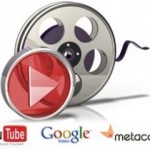Even
though it might not be a major traffic driver like Pinterest or other social
sites, Google Plus has some incredible benefits.
The Benefits of Google Plus for Business
Momentum
The
Business Insider recently reported that growth for Google Plus has suddenly
spiked. In fact, the boom is so noticeable that Google Plus is on track to
overtake Twitter as the world’s 2nd largest social media site, assuming that
the momentum doesn’t slow.
Up 33
percent with 359 million users, more people visit Google Plus on a regular
basis than live in the United States. If there’s anything that marketing’s
taught us, it’s that you always want to be ahead of the curve – and right now
the curve is favoring Google Plus for business.
Growth
Aside
from increased traffic, Mashable reports that Google Plus is also seeing an
increase of time spent on the site. Users are now spending twice as much time
on Google Plus than they did in February and the trend doesn’t appear to be
slowing anytime soon.
As more
and more people spend time on the site, the more powerful traffic driver this
platform will become.
Authorship
Having a
Google Plus account allows you to claim authorship of your original content.
This keeps your unique and original content valuable and accredited to you,
even if content thieves scrape your work.
Furthermore,
the implementation of Google Plus means that links and referrals will be
weighted based on who they come from instead of where they’re posted.
Authorship gives you credibility and power.
Search
Engine Recognition
It goes
without saying that a strong Google Plus presence directly correlates to
stronger search engine recognition. While it can’t replace solid SEO strategy,
why not enhance your efforts?
Flexibility
Whether
you want to host Google Hangouts or filter posts for your Circles, Google Plus
provides flexibility options that many of the other platforms don’t. By taking
advantage of these features, you’re making your brand’s online presence unique
from everyone else’s.
To make
your Google Plus page even more effective, be sure to incorporate profile
links. Unlike other social platforms, you can link to other sites throughout
your Google Plus profile, thereby strengthening your overall sales funnel. As
more people engage with you by sharing and giving you posts a +1, your profile
links will suddenly become powerful tools.
Be sure
to optimize your Google Plus title tags for search engine results. Having a
highly optimized Google Plus page is much easier to rank than a standalone
website. Add a picture to your profile and an author picture for content that
you will claim through “Authorship.”
Posts
with pictures are clicked on up to 5 percent more than posts without. Once
you’ve optimized your Google Plus presence, you can enjoy Google’s bias in
quickly indexing posts that have received a+1.
courtesy of: http://smallbiztrends.com Amie Marse
Contact us and visit: http://www.janetpennconsulting.com/social_mediamarketing.html
Contact us and visit: http://www.janetpennconsulting.com/social_mediamarketing.html









